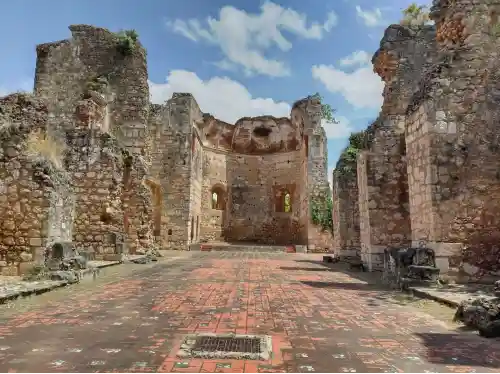The architecture of the Dominican Republic is a captivating blend of historical styles and modern influences, reflecting the country’s rich history and cultural diversity. Here are some key aspects of Dominican architecture:
- Colonial Architecture
- Colonial Zone: The historic Zona Colonial in Santo Domingo is a UNESCO World Heritage site and features some of the earliest examples of European colonial architecture in the Americas. This area is known for its cobblestone streets, grand plazas, and well-preserved buildings, many of which date back to the 16th century.
- Key Structures:
- Cathedral of Santa María la Menor: The oldest cathedral in the Americas, it showcases Gothic and Renaissance architectural elements.
- Alcázar de Colón: A fortress and residence built for Diego Columbus, the son of Christopher Columbus, the building reflects Spanish Renaissance style and houses a museum.
- Faro a Colón: A monumental lighthouse and museum dedicated to Christopher Columbus, featuring a unique modern architectural design that contrasts with older structures.
- Neoclassical and Baroque Influences
- Neoclassical Architecture: In the 18th and 19th centuries, neoclassical elements became prominent in public buildings, such as the National Palace and the National Theatre, characterized by symmetry, columns, and grand facades.
- Baroque Churches: Many churches constructed during the colonial period exhibit Baroque architectural features, including ornate altars, domes, and detailed facades. The Church of Our Lady of the Altagracia in Higüey is a notable example.
- Modern Architecture
- The 20th century saw the emergence of modern architectural styles, particularly in urban areas. Buildings often reflect contemporary architectural trends, featuring bold lines, innovative designs, and the use of glass and steel.
- Notable modern structures include the Santo Domingo Metro stations and the Malecón promenade in Santo Domingo, which showcases modern public spaces and waterfront architecture.
- Residential Architecture
- Traditional Dominican homes, particularly in rural areas, often feature brightly painted exteriors, wooden shutters, and terracotta roofs. Many homes are single-story with open spaces that promote social interaction.
- In urban settings, residential architecture has evolved, incorporating modern designs with amenities and multi-story buildings.
- Sustainable Architecture
- In recent years, there has been a growing focus on sustainable building practices, incorporating eco-friendly materials and energy-efficient designs, particularly in resort and eco-tourism developments.
- Influence of Caribbean Culture
- Dominican architecture often reflects a Caribbean influence, characterized by vibrant colors, open-air designs, and integration with the surrounding environment. The use of local materials, such as coral stone and wood, is common in both traditional and modern constructions.
Overall, the architecture of the Dominican Republic tells the story of its historical journey, showcasing a blend of colonial, neoclassical, modern, and local styles that together form a unique cultural identity. From the charming streets of the Colonial Zone to contemporary urban developments, the architectural landscape is a dynamic reflection of the nation’s rich heritage.




Comments are closed